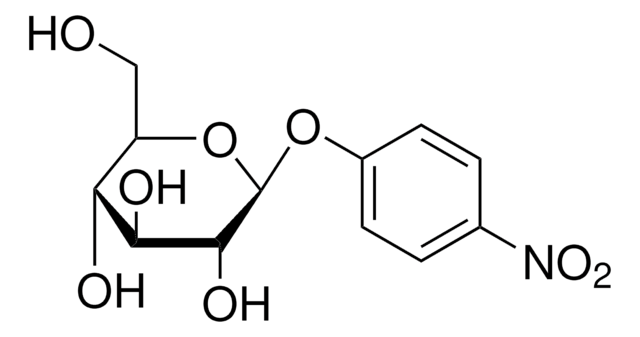T5251
D-(+)- Trealosa dihydrate
≥98.5% (HPLC), from Saccharomyces cerevisiae
Sinónimos:
α,α-Trealosa, α-D-Glucopiranosil-α-D-glucopiranósido
About This Item
Productos recomendados
biological source
Saccharomyces cerevisiae
Quality Level
assay
≥98.5% (HPLC)
form
powder
optical activity
[α]/D 174 to 182 °, c = 1.0% (w/v) in water
technique(s)
HPLC: suitable
cryopreservation: suitable
mp
97-99 °C
application(s)
agriculture
agriculture
cell analysis
genomic analysis
life science and biopharma
SMILES string
[H]O[H].[H]O[H].OC[C@H]1O[C@H](O[C@H]2O[C@H](CO)[C@@H](O)[C@H](O)[C@H]2O)[C@H](O)[C@@H](O)[C@@H]1O
InChI
1S/C12H22O11.2H2O/c13-1-3-5(15)7(17)9(19)11(21-3)23-12-10(20)8(18)6(16)4(2-14)22-12;;/h3-20H,1-2H2;2*1H2/t3-,4-,5-,6-,7+,8+,9-,10-,11-,12-;;/m1../s1
InChI key
DPVHGFAJLZWDOC-PVXXTIHASA-N
¿Está buscando productos similares? Visita Guía de comparación de productos
General description
Application
- Use as a cryoprotectant in a variety of cell freezing media
- Used in excipeint research
Biochem/physiol Actions
Features and Benefits
- Prepared from Saccharomyces cerevisiae
- Suitable for use with HPLC and GC-MS(4)
Preparation Note
Other Notes
Comparable product
Storage Class
11 - Combustible Solids
wgk_germany
WGK 1
flash_point_f
Not applicable
flash_point_c
Not applicable
ppe
Eyeshields, Gloves, type N95 (US)
Certificados de análisis (COA)
Busque Certificados de análisis (COA) introduciendo el número de lote del producto. Los números de lote se encuentran en la etiqueta del producto después de las palabras «Lot» o «Batch»
¿Ya tiene este producto?
Encuentre la documentación para los productos que ha comprado recientemente en la Biblioteca de documentos.
Los clientes también vieron
Nuestro equipo de científicos tiene experiencia en todas las áreas de investigación: Ciencias de la vida, Ciencia de los materiales, Síntesis química, Cromatografía, Analítica y muchas otras.
Póngase en contacto con el Servicio técnico








